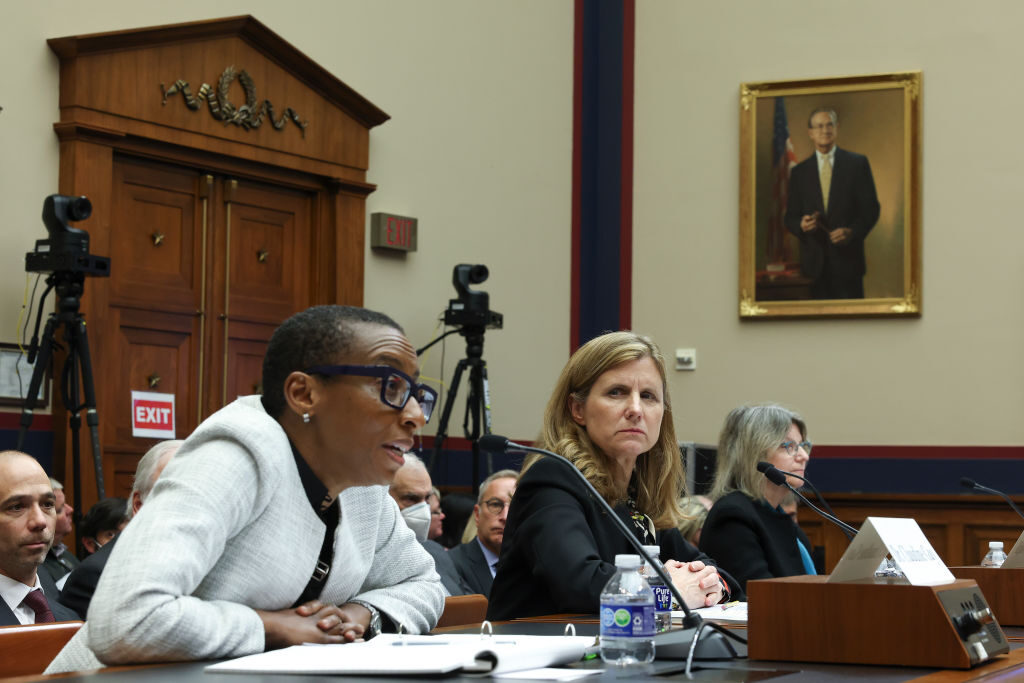On Oct. 3, Congressman Kevin McCarthy (R-Calif.) was ousted from his role as Speaker of the U.S. House of Representatives in a first in American history vote that came after McCarthy angered several hardline members of the House Republican caucus.
The vote, known as a motion to vacate the chair, was initiated by Congressman Matt Gaetz (R-Fla.), a far-right firebrand and a vocal opponent of McCarthy.
All Democrats in attendance and eight Republicans voted to remove McCarthy. The remaining Republicans voted against the motion to vacate.
On Oct. 1, McCarthy pushed through a bill to temporarily fund the government and avoid a government shutdown. The majority of Republicans, including Gaetz, voted against the bill for not including spending cuts that many conservatives had hoped for, meaning that McCarthy had to rely on Democrats to pass it.
Two days later, Gaetz filed the motion to vacate the chair, an action which required only one representative to force a vote on whether the Speaker of the House should retain his position. It would pass 216-210.
In addition to Gaetz, Republican Congressmen Andy Biggs (Ariz.), Ken Buck (Colo.), Tim Burchett (Tenn.), Eli Crane (Ariz.), Bob Good (Va.), Nancy Mace (S.C.), and Matt Rosendale (Mont.) voted to oust McCarthy.
The motion to remove McCarthy was historic. Such an action had only been attempted twice before and was never successful.
It was only possible due to concessions, which included lowering the number of Congressmen needed to force a motion to vacate to one, made by McCarthy during his election as Speaker in January of this year.
That election took 15 individual ballots over the course of several days, before McCarthy convinced enough hardline Republicans to drop their opposition and either vote for him or vote “present.” Voting “present” removes that Congressman’s vote from being counted in the final tally, and thus lowered the number McCarthy needed to win a majority of votes and the election.
The Race for Speaker
Immediately after the vote, the Speakership was deemed vacant. Congressman Patrick McHenry (R-N.C.), was installed as Speaker pro tempore, a temporary officeholder. McHenry, a McCarthy ally, was selected from a secret list of individuals procedurally prepared by McCarthy when he was elected Speaker should something happen to him that would prevent him from carrying out the duties of Speaker.
Without an elected Speaker, the presiding officer of the House of Representatives, the House cannot pass any legislation.
House Democrats are united behind nominating House Minority Leader Hakeem Jeffries (D-N.Y.) for Speaker in the next election, but Democrats on their own do not have a majority in the House needed to elect a Speaker. Republicans have a majority, but their unity has been wrecked by infighting.
Two candidates for the Republican nomination, House Majority Leader Steve Scalise (R-La.) and Chairman of the House Judiciary Committee Jim Jordan (R-Ohio), emerged following McCarthy’s removal. House Republicans voted in a secret ballot election on Oct. 11 for their Speaker nominee. Scalise came out victorious with a vote of 113-99.
However, any nominee for Speaker would require 217 votes, a majority of the House, to be elected Speaker. At most, only four Republicans can vote against their party’s nominee.
Several hardline Republicans publicly said they would not vote for Scalise. Instead, they would diverge from the party and nominate Jordan, who aligns more ideologically with the hardliners than Scalise, during the Speaker election. This is despite Jordan giving Scalise his support following the nomination. Scalise subsequently withdrew from the Speaker race on Oct. 12.
Maybe Jordan?
Jordan once again entered the race following Scalise’s withdrawal. He faced opposition in little-known Congressman Austin Scott (R-Ga.), who announced his bid for the nomination mere hours before the second nomination vote.
This time Jordan won the vote, 124-81. However, as with Scalise, Jordan faces similar questions whether he can gain 217 votes. In contrast with Scalise, Jordan faces skepticism from more moderate members of the Republican caucus, who are uncomfortable with supporting someone with Jordan’s reputation as an ultraconservative rabble-rouser, and others who still believe that either McCarthy or Scalise should be speaker.
After the nomination vote, a validation vote was held to determine how many Republicans would actually vote for Jordan during the election on the House floor; 55 voted no.
Over the course of the day on Oct. 16, Jordan slowly whittled down his opposition, likely through pressure tactics, which he is infamous for on Capitol Hill. However, at the time it was unclear whether he would actually have the needed votes for election the next day.
A Speaker Has Not Been Elected
In the afternoon hours of Oct. 17, the House of Representatives held its speakership election.
Hakeem Jeffries received unanimous support from House Democrats with 212 votes; Jordan received 200 votes, far short of the 217 needed. Twenty Republicans voted for another candidate. Congressman Gus Bilirakis (R-Fla.) was also absent from the vote due to a funeral, depriving Jordan of another vote.
Out of the 20 defectors, seven voted for Steve Scalise, and six voted for Kevin McCarthy. The rest of the 20 votes were for various names put forward as protest votes against Jordan.
Several of the votes were moderates uncomfortable with the idea of an ultraconservative like Jordan as speaker. Others were unhappy with the fact that while Jordan went to the floor vote without complete support, Scalise did not.
The second Speaker ballot on Oct. 18 had similar results. There was unanimous Democratic support for Jefferies, but Jordan saw his vote count dwindle to 199.
Bilirakis was back, and two Congressmen who initially voted against Jordan voted for him on the second ballot. But four new Republicans broke ranks and voted against Jordan, bringing the opposition number to 22.
A House Divided
The tactics that Jordan’s supporters have used to pressure holdouts to vote for him have also rattled the race Speaker.
Prior to the first ballot, producers from the show of Fox News personality Sean Hannity sent requests for comment to the offices of several House Republicans who were rumored to be part of the opposition to a Jordan speakership. This and other statements made by individuals in right-wing media have raised concerns of intimidation by partisan activists.
After the first and second ballots, many of the Republican congressmen who voted against Jordan said they had been harassed by phone calls and messages aimed at pressuring them to change their votes.
The wife of centrist Congressman Don Bacon (R-Neb.) received several anonymous text messages threatening her husband if he did not support Jordan.
Congresswoman Mariannette Miller-Meeks (R-Iowa) said she received death threats after she voted against Jordan on the second ballot.
Jordan himself has not been directly linked to the pressure and intimidation campaign. He has condemned the violent rhetoric used against his detractors, but such harsh tactics are reminiscent of his well known reputation of using threats of political retribution on Capitol Hill.
Former Speaker John Boehner, a fellow Republican, called Jordan in 2015 a “legislative terrorist” because of his hardball style, which ultimately led to Boehner being forced out of his own speakership by Jordan and other like-minded congressmen.
In lieu of a third ballot, on Oct. 19, Jordan held a conference with House Republicans to determine the next steps going forward. The meeting ended without a resolution.
Jordan says he plans to push forward with a third ballot, but none of the holdouts have signaled they are changing their votes.
The House has been without a Speaker for 18 days. Some moderates in both parties have suggested expanding the power of Speaker pro tempore Patrick McHenry, but McHenry has said he does not want the job of speaker for the long term.
Meanwhile legislation is at a standstill. Without a Speaker, the House cannot operate; and without an operating House, nothing can be passed.
The temporary funding measure that cost Kevin McCarthy his speakership is due to end on Nov. 17, meaning that the federal government will shut down without intervention; non-essential government agencies will not operate, and federal employees will not be paid.
The third and latest ballot on Oct. 20 showed support for Jordan dwindling only further. Three more Republicans joined the ranks opposing Jordan, bringing the number to 25.
With three ballots behind them, House Republicans determined that Jordan would no longer be their nominee for Speaker of the House. In a 112-86 secret ballot Republicans chose to abandon Jordan and search for a new nominee. Now the race for Republicans’ third speaker nominee begins.







